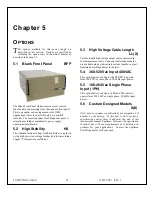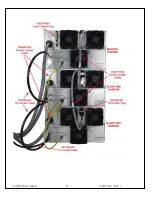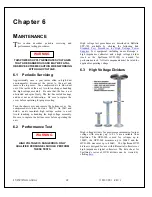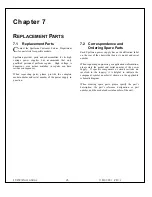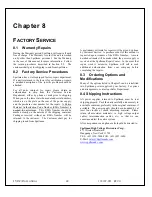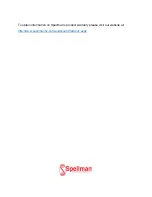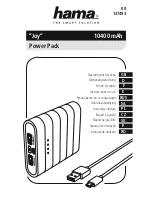
ST/STR/STA MANUAL
18
118107-001 REV J
Typically a SYSTEM FAULT and AC FAULT indication
will appear on the front panel if an error in the charging
circuits has occurred.
R5 on the POWER PWB – A6 functions as a bleeder
resistor, which is used to discharge the front end filter
capacitors C1 and C2. DS1 provides visual indication
when DC voltage is present. This indicator should not be
relied on for confirming the presence or absence of the
DC voltage in any situation where user safety is of
concern.
4.2 Inverter
The inverter employs a proprietary, quasi-resonant, pulse
width modulated topology. L1 and L5 are the resonating
inductors. Q1, Q2 Q3 and Q4 are high speed IGBT
isolated power modules. These devices provide high
frequency switching capability to control the flow of
current through the primary of the high voltage step up
transformers. The gate control for the switching devices
is provided by GATE DRIVE PWB A3 and A4. The
control signals are generated by the SYSTEM CONTROL
PWB – A1.
4.3 High Voltage Transformer
The output of the Inverter is connected to the primary of
the High Voltage Transformer. The High Voltage
Transformer is a step-up type. Typical secondary
voltages are in the range of 1kV to 4.5kV depending upon
the units specific maximum output voltage rating.
4.4 High Voltage Assembly
The High Voltage Assembly will vary depending upon
the model ordered. The circuitry typically consists of a
full wave, full bridge, or full wave doubler for voltage
outputs in the range of 1kV to 10kV. The higher voltage
ranges utilize various parallel, series arrangements of a
full wave voltage doubler. For example, the 8kV output
is obtained by connecting a number of full wave voltage
doublers in parallel. The 120kV output is obtained by
connecting a number of full wave voltage doublers in
series.
Output filtering is typically provided by an L-C type
filter. Voltage feedback for regulation and monitoring is
provided by a high bandwidth resistive/capacitive
compensated feedback divider. Current feedback for
regulation and monitoring is provided by a sense resistor
connected at the low voltage end of the High Voltage
output section.
4.5 System Control PWB
The majority of control circuits for power supply controls
are located on the SYSTEM CONTROL PWB – A1. For
trouble shooting and testing purposes, this board can be
easily accessed by removing the screws located on the
side panels near the front panel. The front panel will
hinge down allowing for easy access to the SYSTEM
CONTROL PWB
4.6 Front Panel Assembly
Front Panel CONTROL POWER, HV OFF, HIGH
VOLTAGE
ON,
switches,
voltage
and
current
programming potentiometers, voltage and current digital
meters, and status indications are connected to the
FRONT PANEL PWB. – A7. The FRONT PANEL PWB
interfaces directly to the SYSTEM CONTROL PWB -
A1.
4.7 Master/Slave Rear Panel
PWB
– ST Only
This assembly is only required and installed when more
than one ST chassis is configured in the system. By
configuring chassis in parallel using a Master/Slave
arrangements additional power increments of 12kW’s can
be obtained for each chassis added. This Master/Slave
Rear Panel PWB provided the necessary control signal
connectivity and functionality to operate multiple chassis
in parallel as a single high powered system.
















